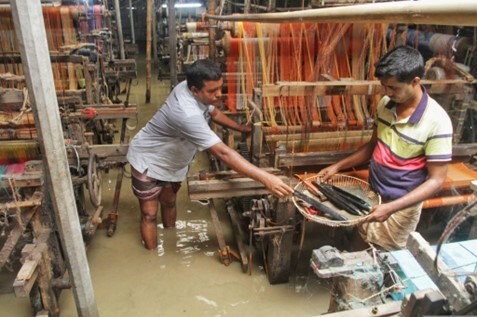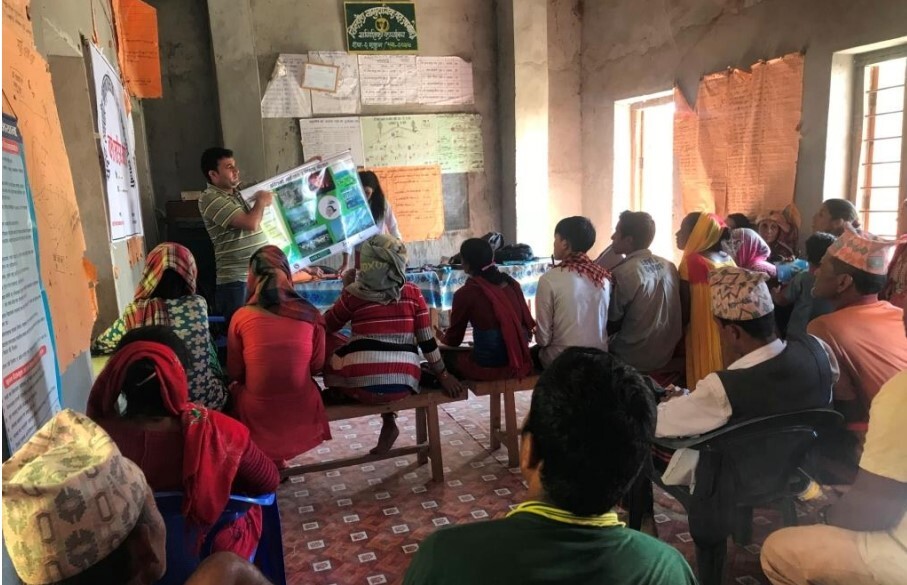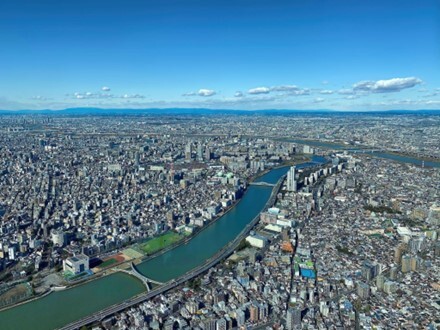
Photo by Sebastian Pena Lambarri on Unsplash
BASIC INFORMATION
| Source |
Nepal's NAP 2021-2050: Summary for policymakers (2021, MoFE) |
|---|---|
| Date posted | October 30, 2021 |
| Version | 1 |
| Periods | 2021 - 2050 |
Goals
- Build the adaptive capacity and resilience of key natural, social, and economic sectors vulnerable to and at risk of climate change, and service providers.
- Integrate climate change issues into policies, strategies, plans, and programmes of all sectors and at local, provincial, and federal levels emphasizing Gender Equality, Social Inclusion, Livelihoods and Governance concerns.
- Ensure equitable resource mobilization and distribution of resources for climate change adaptation through national and international financing, research, technology, and extension services related to climate change adaptation.
Stakeholder Engagement
Locally-led Adaptation (LLA)
- While identifying and prioritizing climate change adaptation actions, projects and programmes, consideration was given on a country-driven basis; utilizing the services of national, provincial, local, and community-based entities where appropriate.
- Within the programmes, some community-based approaches such as forest management and eco and cultural tourism are included.
Private Sector
- Programmes specifically mentioned the involvement of the private sector are included in the agriculture, tourism, health, DRR, water and gender sector.
- Private sectors are encouraged to report on their adaptation actions to the Climate Change Data Management, Monitoring. and Reporting Centre (CCDMMRC).

Photo by tribesh kayastha on Unsplash
Risk Assessment
Climate risk assessment (current trend, future projections)
Altitudinal and physiographic heterogeneity affect temperature and rainfall patterns.
Current trend
TEMPERATURE: Annual minimum temperature varies from -4℃to19℃, and maximum temperature ranges from 4℃ to 30℃. Temperatures in Nepal increased at the rate of 0.056℃ per year from 1971 to 2014.
PRECIPITATION: Average annual rainfall is around 1,600 mm, but it varies considerably according to regions. It ranges from 295 mm to 3,345 mm. Precipitation decreased in all seasons from 1971 to 2014. Precipitation extremes are increasing.
Future projection
TEMPERATURE: Nepal's climate will warm further, with increases in temperature projected for all seasons. Future climate change scenarios for the med-term (2016-2045), long-term (2036-2065), and end of century with respect to the reference period (1981-2010) suggested that the climate in Nepal will be significantly warmer and in the future.
PRECIPITATION: Future climate change scenarios for the med-term (2016-2045), long-term (2036-2065), and end of century with respect to the reference period (1981-2010) suggested that the climate in Nepal will be significantly wetter and in the future, but for a decrease in precipitation during the pre-monsoon season.
CLIMATE HAZARDS: It is estimated that extreme climate events are likely to be more frequent and severe in the future. There are risks of natural hazards such as earthquakes, droughts, floods, landslides, extreme temperature, and GLOFs. Especially water-related hazards are relevant in Nepal. Forest fires are another common hazard. These hazards are expected to increase in frequency as temperatures rise.
Data sources
Current trend
TEMPERATURE:
Figure 4: Trend of average annual temperature (2000-2016) and annual rainfall (2000-2017)
Data source: DHM. 2001, 2018 and CBS. 2019, Environmental Statistics of Nepal
PRECIPITATION:
Figure 5: Projected Average Annual Mean Temperature and Annual Rainfall
Data source: Climate change scenarios data of Nepal. Reference data 1981-2010, (ICIMOD)
CLIMATE HAZARDS:
Figure 6: Total forest fire events at municipal level observed between 2012 and 2020
Data source: VIIRS 375 m MODIS data from 2012-2020
Figure 7: Total number of events and human death caused by climate hazards between 2011 and 2021
Data source: Government of Nepal https://bipad.gov.np
Future projection
TEMPERATURE:
Table 1: Projected range of mean change in temperature (℃) compared to the reference period 1981-2010 in the five physiographic regions of Nepal
Data source: MoFE 2019
PRECIPITATION:
Table 2: Projected range of mean change in precipitation (%) for different seasons compared to the reference period 1981-2010
Data source: MoFe 2019
CLIMATE HAZARDS:
Table 3: Summary of climate hazards and the key factors of vulnerability in Nepal
Data source: Patra & Terton 2017; World Bank Group & Asian ADB 2021; Karki et al. 2017; GoN 2021, 2020b; MoFE 2021
Implementation
Implementation structure
In Federal level: promotes actions to mainstream adaptation in the policies.
The main institutions involved are Environmental Protection and Climate Change Management National Council (EPCCMNC), Inter-Ministerial Climate Change Coordination Committee (IMCCCC), Thematic and Cross-cutting Working Groups (T/CWGs), and Ministry of Forest and Environment.
In Provincial and local level: promote actions to mainstream adaptation in the planning and budgeting processes.
The main institutions involved at the provincial level are Provincial Environmental Protection and Climate Change Management Council (PEPCCMC), Provincial Climate Change Coordination Committee (PCCCC), Provincial Policy and planning Commission, and the ministry related to forests, environment and climate change. Institutions involved at the local level are the District Climate Change Coordination Committee and the Local-level Executive Board.
Priority Sectors
- Agriculture and food security (9 programmes / USD11.2B)
- Forests, Biodiversity and watershed conservation (11 programmes / USD8.7B)
- Water resources and energy (8 programmes / USD5.35B)
- Rural and urban settlements (3 programmes / USD2.85B)
- Industry, transport and physical infrastructure (5 programmes / USD3.05B)
- Tourism, natural and cultural heritage (8 programmes / USD1.13B)
- Health, drinking water and sanitation (7 programmes / USD4.75B)
- Disaster risk reduction and management (6 programmes / USD8.5B)
- Gender equality and social inclusion livelihoods and governance (4 programmes / USD0.7B)
DRR
Floods, landslides, epidemics, and fires are the most devastating climate-induced disasters in Nepal in regard to deaths, affected population, and economic losses (MoFE, 2021).
Six priority adaptation programmes in the DRRM sector will help to empower provincial and local governments to assume effective and efficient roles in leading DRRM activities in their respective localities. Those programmes will improve and strengthen early warning systems and multi-hazards monitoring, and integrate adaptation considerations into social protection systems.
NbS / EbA
The following essence of EbA/NbS are observed:
- The methodology of the NAP development promoted eco-friendly and nature-based solutions that align with sustainable development objectives and programmes.
- “Ecosystem integrity to maintain naturally biodiverse, healthy, and resilient ecosystems.” is included in one of the main principles of the NAP.
- “Forests, Biodiversity and watershed conservation” is one of the priority sectors.
The programme of “Increase urban forests coverage and conserve ecosystem” is included under the health sector.
M&E
M&E Implementation status
The Ministry of Forests and Environment (MoFE) is responsible for reviewing and reporting on the implementation of the NAP.
At the local level, the Forest, Environment and Disaster Management Section will be responsible for monitoring of adaptation activities. At provincial level, the Ministries of Environment and climate change is responsible for monitoring and reporting on all adaptation activities. At the federal level, MoFE and the technical working groups will be responsible for monitoring and reporting on adaptation activities.
CCDMMRC will be responsible for compiling the monitoring reports submitted by the provincial ministries and technical working groups at the national level.
KPI and other indicators
The review of the NAP will mainly be based on measuring the impacts of the adaptation actions – showing how taking action on adaptation leads to development benefits that are linked to the government’s national priorities.
Changes/additions to the updated version of the document, if any
N/A
Plan for review and updating
A review of the implementation of the NAP will take place every five years; and the NAP will be updated every 10 years.
Status of supports by international organizations, if any
NAP of Nepal is supported by Green climate Fund (GCF), Adaptation Fund (AF), Least Developed Countries Fund (LDCF), Deutsche Gesellschaft für Internationale Zusammenarbeit (GIZ), USAID, UK AID, JICA and so on.
Related Information
KEYWORDS
- # Adaptation Policy
- # Agriculture
- # Biodiversity/Ecosystem
- # Coastal Areas
- # Energy
- # Fisheries
- # Forests/Forestry
- # Human Health
- # Life of Citizenry and Urban Life
- # Local Communities
- # Natural Disasters
- # Tourism
- # Water Environment/Water Resources
- # Adaptation Action/implementation
- # Adaptation Funding/Finance
- # Adaptation Planning/Policy
- # Capacity Building
- # Climate Projection
- # Disaster Prevention/Disaster Mitigation
- # Impact Assessment/Risk Assessment
- # International Cooperation
- # Locally-led Adaptation
- # Nature-based Solutions
- # Asia
- # Nepal
- # 2022




